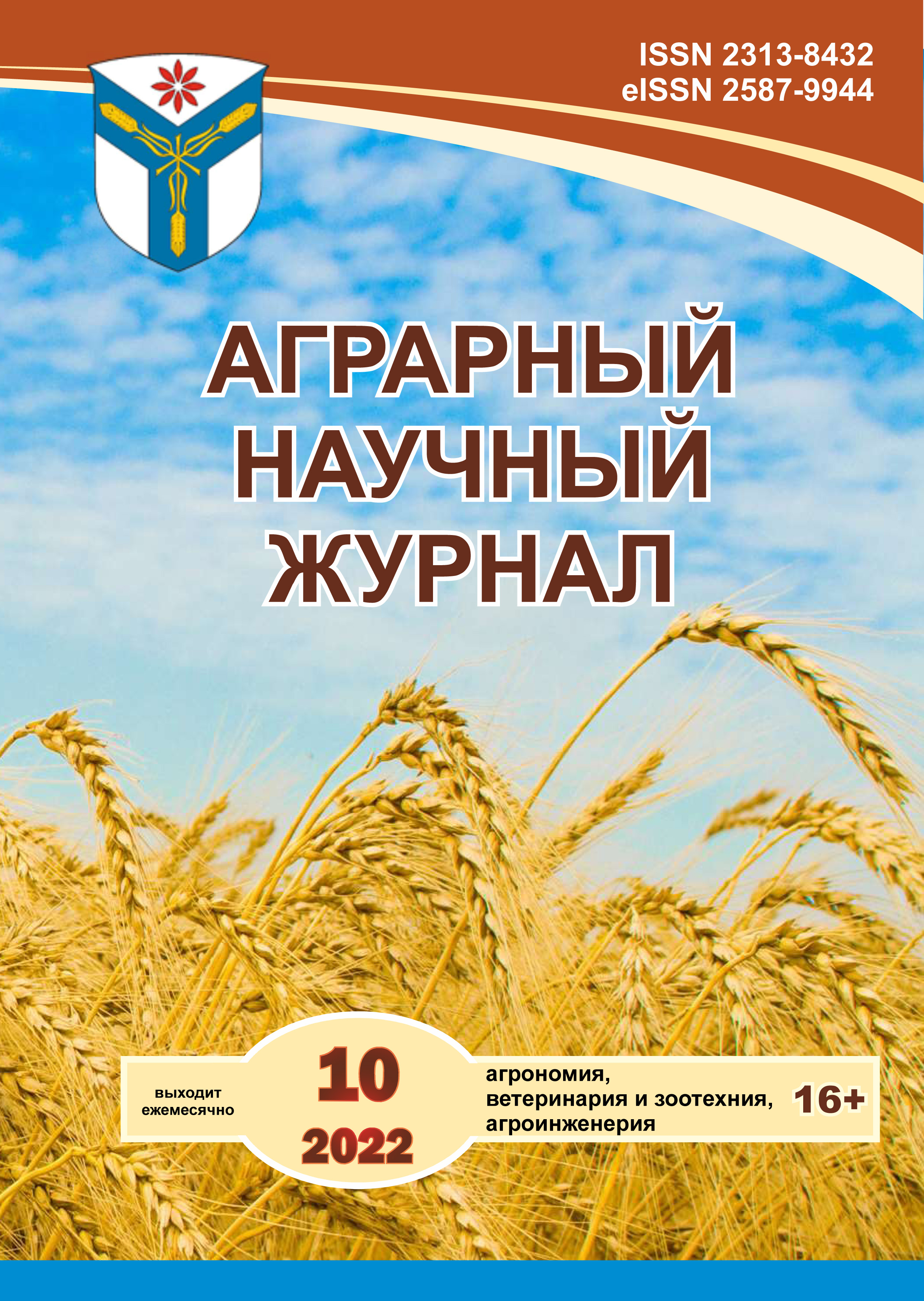Selection of red clover for fodder quality
DOI:
https://doi.org/10.28983/asj.y2022i10pp20-24Keywords:
clover, selection, fodder qualityAbstract
The article presents the results of studies of clover breeding for fodder quality in the conditions of North Ossetia-Alania. Based on the assessment of the initial breeding material, it was revealed that the quality of the chemical composition of the green mass of clover undergoes variability depending on climatic conditions, the protein content of the test samples varies from the phase of development, year of life, place of growth and genotype of the variety. With the rise of the mountain height, the crude protein increases, positive correlations have been established between the protein content and the traits: pubescence of the stems, foliage, intensity of the leaf pattern, leaf color, the correlated traits depend on the varietal characteristics and range from weak to close positive, the amount of essential amino acids varies from habitats, the content of extragenic isoflavones in wild forms is lower than in the cultivated variety, selection for a low content of isoflavones does not reduce yields. In order to select samples with a low content of isoflavones, an evaluation of the breeding material was carried out. Their content in different samples and places of growth was taken into account, taking into account vertical zonality. Our studies have established that in the phase of full flowering, the amount of isoflavones in wild-growing forms depends on the place of growth. In mountainous areas, wild-growing forms contain isoflavones 0.09-0.25% lower than the cultivar Osetinsky. Therefore, the selection of wild-growing forms, taking into account vertical zonality, will provide a valuable source material for breeding with a low content of isoflavones.
Downloads
References
Бекузарова С.А., Зарьянова З.А. Способ отбора растений клевера лугового с высокой семенной продуктивностью. Патент на изобретение RU 2695447 C1, 23.07.2019. Заявка № 2018109650 от 19.03.2018.
Селекция видов клевера на иммунитет в условиях РСО-Алании / И.А.Датиева [и др.]// Аграрная наука. 2019. № 5. С. 49–52.
Лущенко Г.В., Бекузарова С.А.Экологическая селекция клевера лугового
// Современные технологии возделывания сельскохозяйственных культур: сб.к науч. тр.;под ред. Ш.Б. Байрамбекова, С.Д. Соколова. Астрахань, 2018. С. 105–108.
Мазин А.М.Оценка сортов клевера луговогоселекции смоленской госхос в коллекционном питомнике. Технические культуры // Научный сельскохозяйственный журнал. 2021. № 1 (1). С. 24–29.
Писковацкая Р.Г., Макаева А.М.Селекция клевера ползучего (trifoliumrepens l.) на продуктивность и устойчивость в пастбищных травосмесях //
Адаптивное кормопроизводство. 2017. № 4. С. 76–81.
The method of obtaining the original material for the selection of yellow clover under the conditions of the stavropol territory / N.S.Chukhlebovaet al. // IOP Conference Series: Earth and Environmental Science. Krasnoyarsk Science and Technology City Hall of the Russian Union of Scientific and Engineering Associations.2019. P. 42004.
Allele frequency changes provide evidence for selection and identification of candidate loci for survival in red clover (trifoliumpratense l.) / ?.Ergonet al. // Frontiers in Plant Science. 2019. Т. 10. No. JAN. P. 718.
Vleugels T., Rold?n-Ruiz I., Cnops G.
Marker-assisted parentage analysis reveals high individual selfing rates in tetraploid red clover genotypes selected for seed yield// Plant Breeding. 2019. Т. 138. No. 6. P. 947–957.
Biochemical and molecular responses during overwintering of red clover populations recurrently selected for improved freezing tolerance / A. Bertrand et al.// Plant Science. 2020. Т. 292. P. 110–388.
Lazarev N.N., Kukharenkova O.V., Kurenkova E.M.
The resistance of white clover (trifoliumrepens l.) in grass mixtures with grasses in threecut cultivation// Plant Cell Biotechnology and Molecular Biology. 2021. Т. 22. No. 27–28. P. 1–8.
Downloads
Published
Issue
Section
License
Copyright (c) 2022 The Agrarian Scientific Journal

This work is licensed under a Creative Commons Attribution-NonCommercial-NoDerivatives 4.0 International License.








